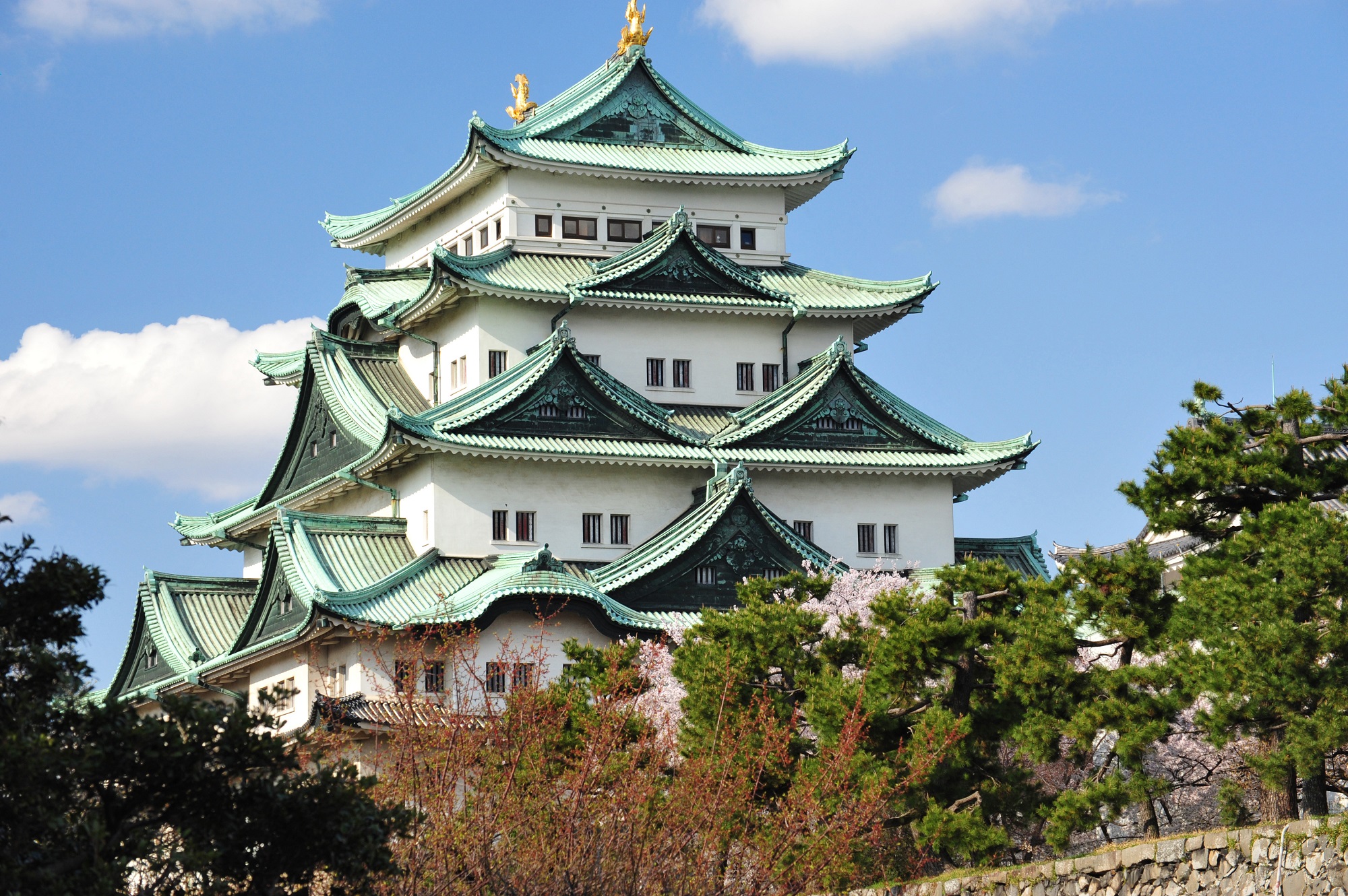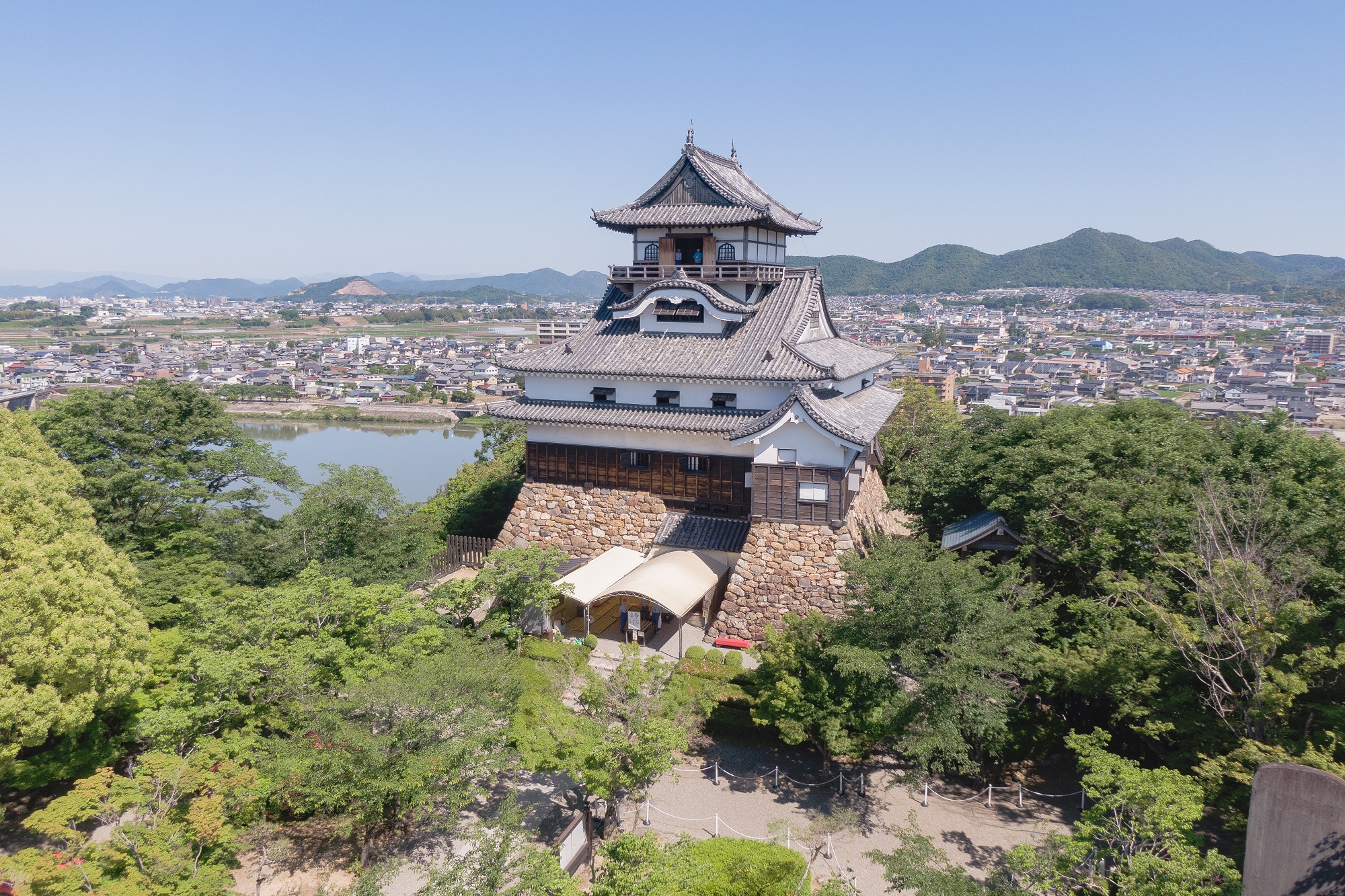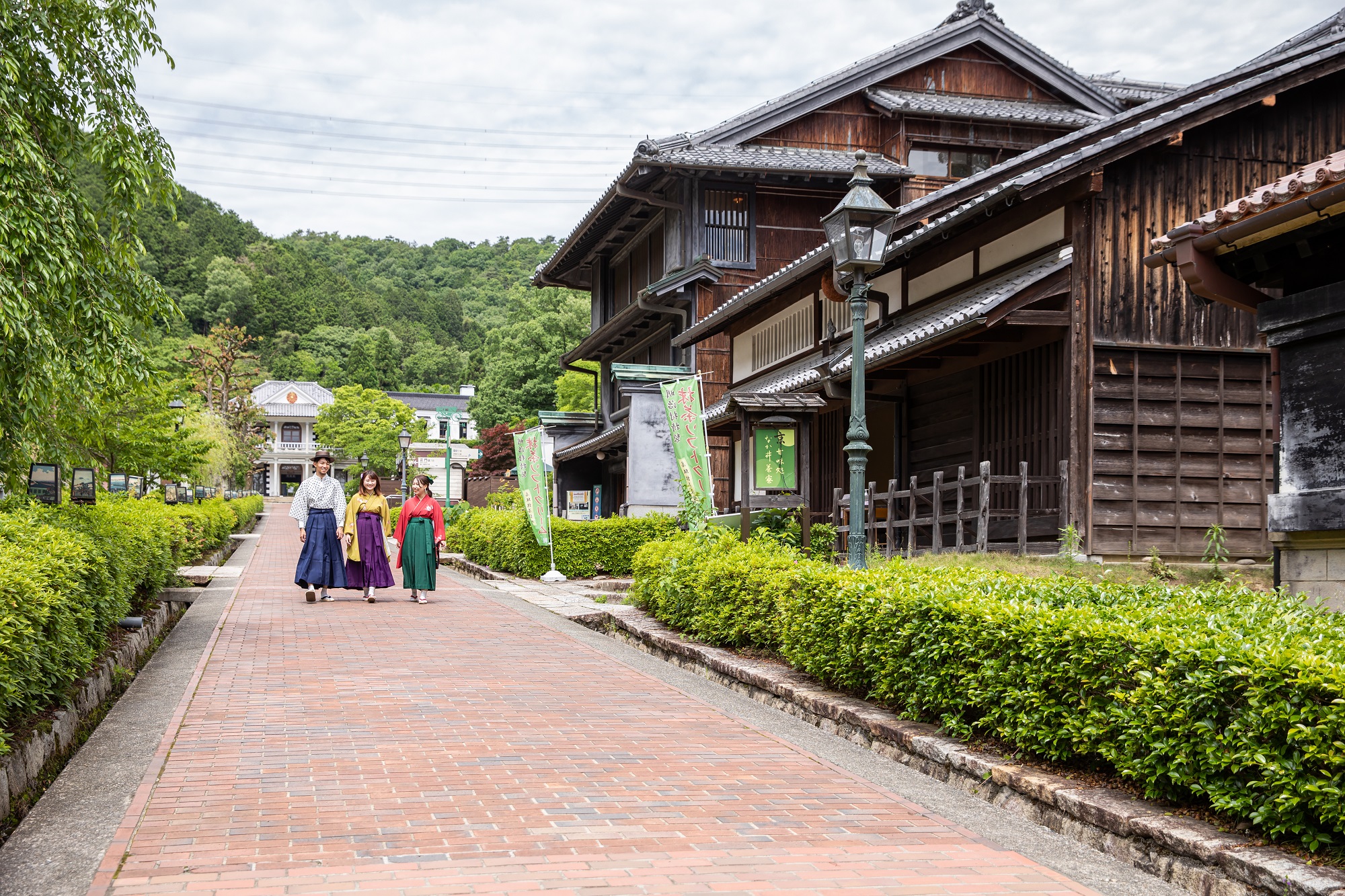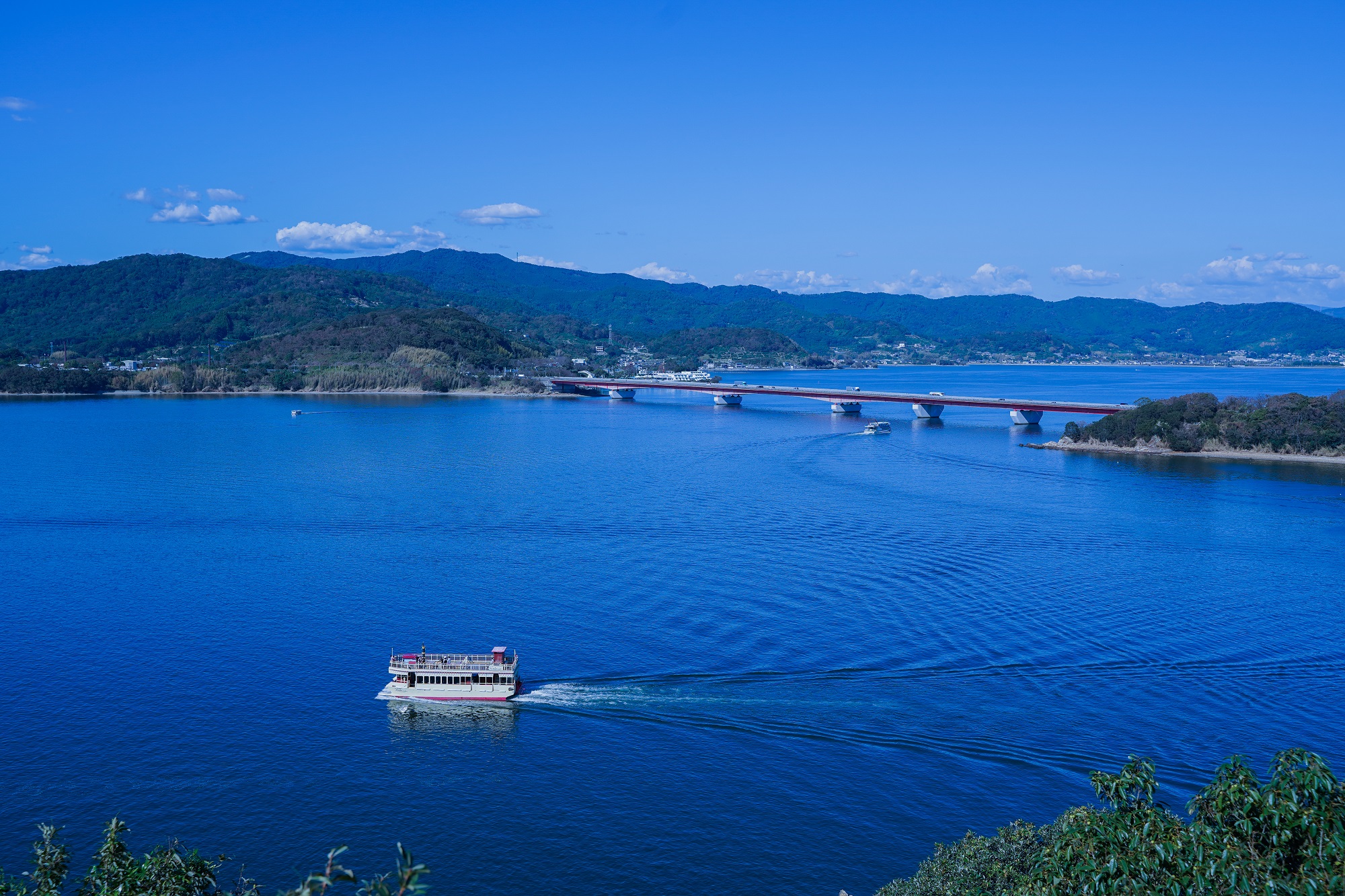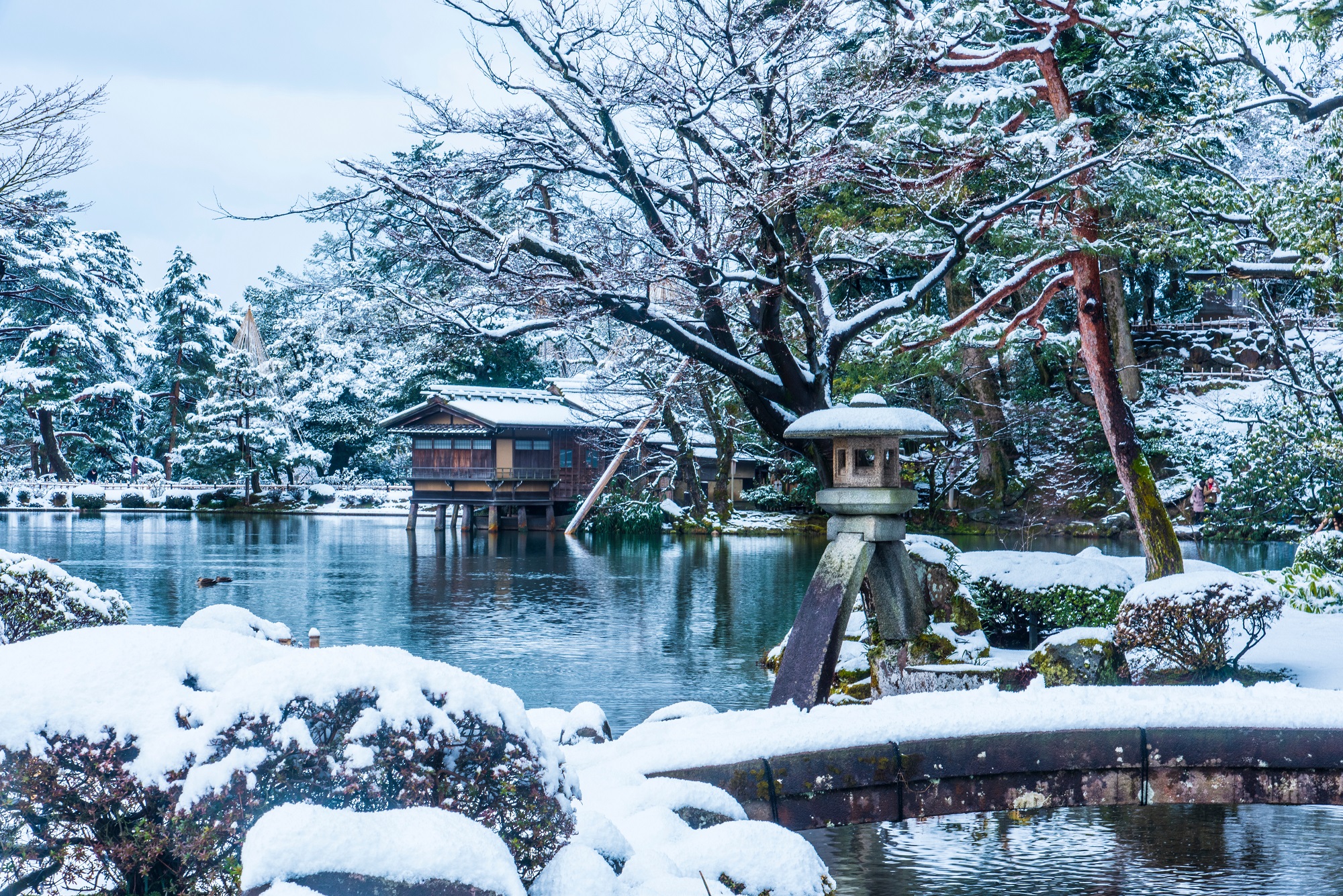Cherry Blossoms/桜
History of Cherry Blossom Viewing
Cherry blossoms are Japan's national flower and by far the most beloved flower of the Japanese people. In ancient times, it was believed that the rice field gods, called Ta no Kami, who were absent during the winter, would return in spring, and that the blooming cherry blossoms heralded their arrival. As such, cherry blossom viewing, or "hanami," was an event to pray to the gods for a bountiful harvest. Until the 9th century, plum blossoms were the flower of choice for the nobility, but their interest eventually shifted to cherry blossoms, and they began to transplant cherry trees from the mountains to their own gardens and hold banquets to view the blossoms. Gradually, hanami spread from the nobility to the samurai, then the masses, spanning out from the cities to the countryside, until ultimately people all throughout the nation, regardless of status, adopted this undeniably authentic Japanese tradition.

During the Warring States Period, the scale of hanami grew exponentially, and in 1594, Toyotomi Hideyoshi held the "Yoshino Hanami," where some 5,000 people, including famous military commanders such as Tokugawa Ieyasu and Date Masamune, gathered for a grand five-day feast.
In 1625, when Kaneiji Temple was built in Ueno, Taito ward, Tokyo, yamazakura cherry trees were planted in various places within the temple grounds. During the blooming season, the temple grounds were opened to the public and crowds flocked from far and wide to admire the picturesque scenery. In 1717, cherry trees were planted along Sumida River, a large waterway that runs through Tokyo, then in 1720 on Mt. Asuka. These later became famous hanami spots, where citizens of Edo (former Tokyo) enjoyed eating, drinking, and being merry under a delightful pink canvass of cherry blossoms.
Toward the end of the Edo Period (1603-1868), planters in Somei Village (present-day Komagome, Toshima ward) began experimenting with growing new varieties of cherry trees. The "Somei-yoshino" cherry tree was initially called the "Yoshino" cherry tree, but it is said that the name "Somei" was later added to distinguish it from the mountain cherry trees that grow in Yoshino District, Nara Prefecture. Somei-Yoshino became popular due to its large and attractive flowers, in addition to the tree's ability to grow quickly and bloom from a young age. It was planted throughout Japan and spread rapidly.
In 1868, as Japan entered its Meiji Era, many daimyo's residences and aristocrats' gardens were demolished. This combined with the extensive damage from air raids during WWII resulted in a sharp decline in the number of cherry tree species, which was said to have exceeded 250 by the end of the Edo Period (1603-1868). However, plant breeders and researchers have continued to improve the varieties of cherry trees based on what remained, and since then, cherry trees have continued to spread throughout Japan and even abroad.

How to Enjoy Your Hanami and Rules to Remember
Even today, people in Japan enjoy eating and drinking with family and friends under cherry blossoms in full bloom. Many hanami spots hold cherry blossom festivals, with night lights, stalls, and events. If you come to Japan during the cherry blossom season, don't miss out on your own unforgettable hanami experience!
General Hanami Rules
・Do not touch the cherry trees.
Cherry trees are very delicate, and when touched may get scratches from where bacteria can enter, eventually causing the tree to die. Climbing, breaking branches and flowers are of course out of the question, but never place anything on the branches or roots, or touch the branches or trunk either.
・Always take your garbage home with you.
Hanami are events enjoyed by one and all, so to ensure a pleasant experience for the people that come after you, be sure to clean up properly and take all of your garbage with you.
・Do not make loud noises.
It is easy to become loud and boisterous while enjoying hanami with your friends and family, but this can be a nuisance to others around you who may want to view the flowers in peace and quiet.
・Do not enter areas that are off-limits.
Some facilities have areas that are off-limits to visitors. Please be careful not to enter private property.
・Drink in moderation.
Even in places where the consumption of alcohol is permitted, be sure to drink in moderation; remembering that you are in a public place.
In addition, please be careful not to become so absorbed in taking pictures that you cause trouble for those around you. Also, be sure to check the rules for infectious disease control, which may have changed from previous years.
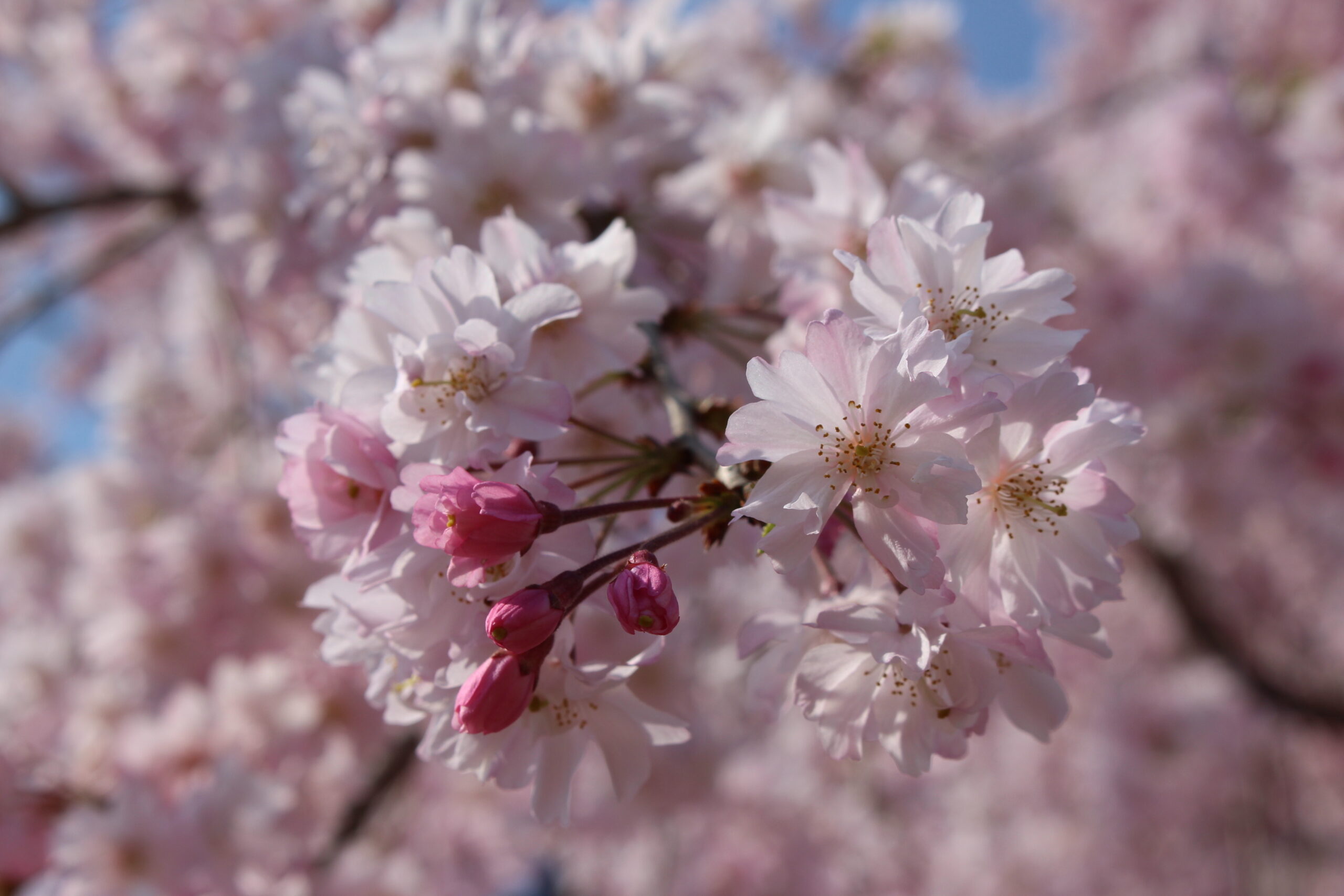
Recommended Hanami Spots in Japan's Chubu Region
Aichi
Nagoya Castle (Nagoya City)
Nagoya Castle is one of Nagoya's most famous hanami spots, with approximately 1,000 cherry trees, including Somei-yoshino and Shidare-zakura, in full bloom from late March, and illuminated at night during the annual Sakura Festival.
Click here for more on Nagoya Castle
Inuyama Castle (Inuyama City)
The area around Inuyama Castle and the banks of Kiso River are famous for its cherry blossoms, where approximately 400 cherry trees burst gloriously into full bloom. It is nice to view the cherry blossoms from the promenade along Kiso River, but we also recommend taking a sightseeing boat to enjoy the magnificent view of the castle and cherry blossoms from the water.
Click here for more on Inuyama Castle
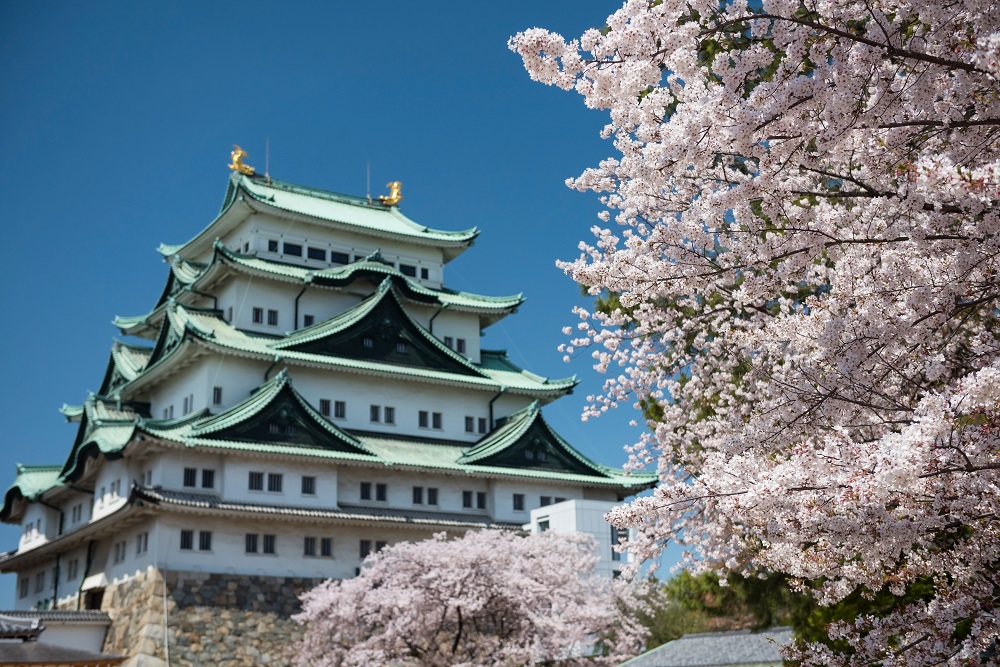
Shizuoka
Kawazu River (Kawazu Town, Kamo-gun)
Along the Kawazu River, Kawazu-zakura cherry trees begin to bloom from late January every year. Kawazu-zakura are early-blooming cherry trees discovered in the town of Kawazu, Shizuoka Prefecture, and are characterized by their large, brilliant pink petals. The Kawazu Cherry Blossom Festival is held when the flowers are in full bloom, and an enchanting light show enhancing the blossoms can be enjoyed after dark.
Hamamatsu Castle Park (Hamamatsu City)
Hamamatsu Castle is known as the castle where Tokugawa Ieyasu spent 17 years as a young man and later ruled over the entire country. Located in the heart of Hamamatsu City and yet surrounded by lush greenery, Hamamatsu Castle Park is one of Hamamatsu's most-adored cherry blossom viewing spots. A light-up event and other associated festivities make the experience even more enjoyable.
Click here for more on Hamamatsu City
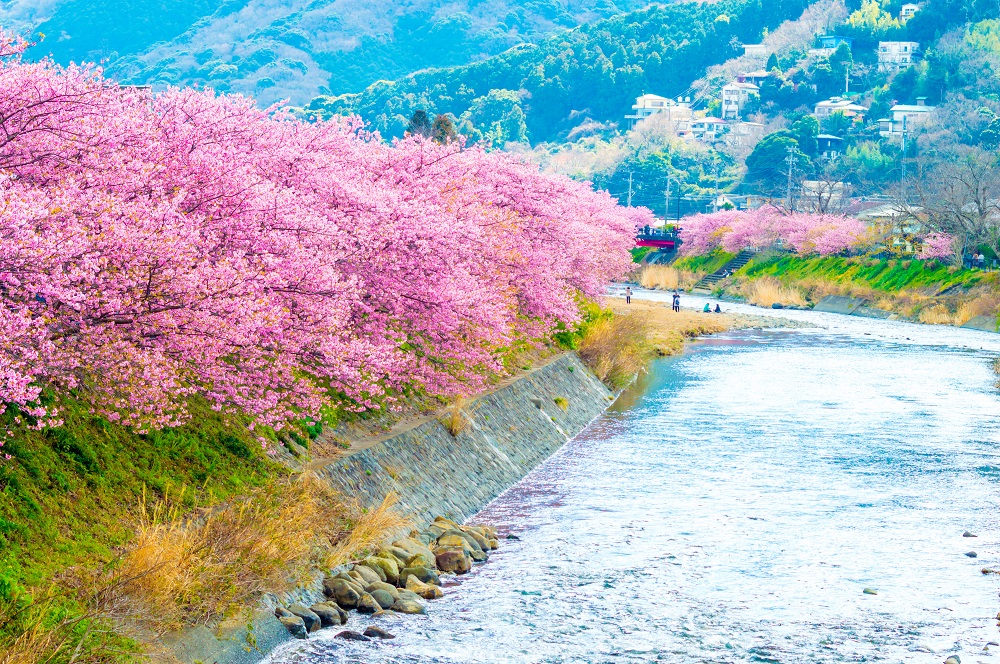
Nagano
Matsumoto Castle (Matsumoto City)
Every year, Matsumoto Castle hosts the "Night Cherry Blossom Party" and the "National Treasure Matsumoto Castle Cherry Blossom-Lined Path of Light" for eight days from three days after the cherry blossoms are declared to be in full bloom. The castle tower, Honmaru Garden, and rows of cherry trees along the outer moat of Matsumoto Castle are lit up at night, creating a fantastic collaboration between Matsumoto Castle and the cherry blossoms that simply cannot be missed.
Click here for more on Matsumoto Castle
Shiroyama Park (Nagano City)
Shiroyama Park, established in 1900, is Nagano City's oldest park located to the east of Zenkoji Temple. It is widely known as one of Nagano City's top cherry blossom viewing spots. A slope lined with cherry trees leads to the Unjoden Hall of Zenkoji Temple, where bonbori lanterns are hung to add an ethereal feel to your hanami experience.
Click here for more on Nagano City
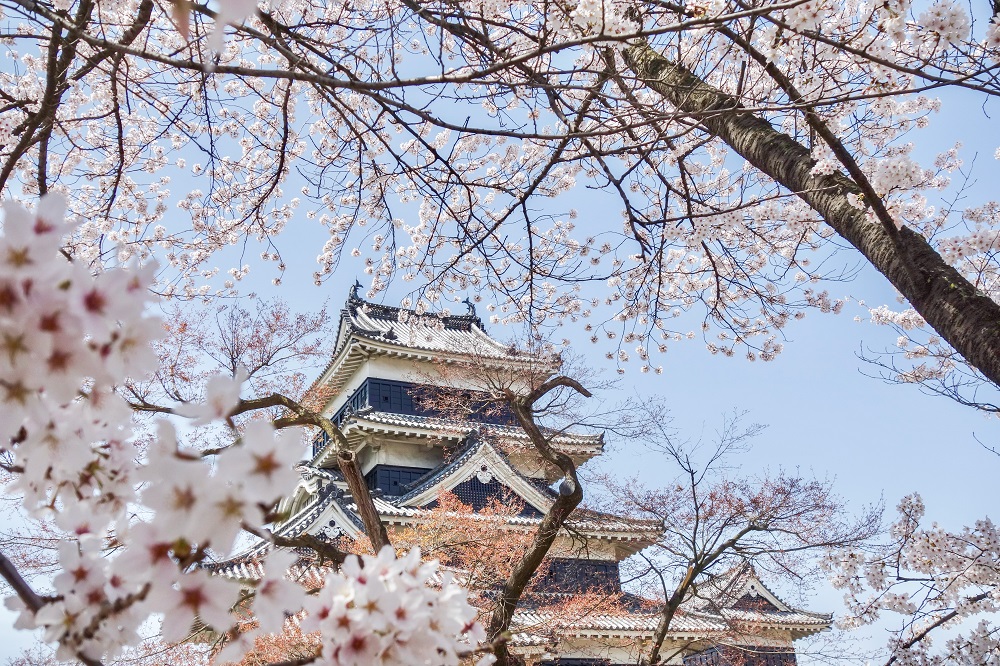
Gifu
Gifu Park and Nagara River Bank (Gifu City)
The area around Gifu Park and the Nagara River bank is a famous hanami spot boasting approximately 1 km of cherry trees. Gifu Park is located at the foot of Mt. Kinga and on the north side of the park, there is a garden built in commemoration of the friendship city affiliation with Hangzhou City in China. This garden takes on the appearance of a beautiful pink painting when the cherry blossoms bloom in spring.
Click here for more on Gifu City
Around Nakabashi Bridge (Takayama City)
Nakabashi Bridge, which spans Miya River running through the center of Takayama City, is a famous cherry blossom viewing spot where the contrast between the red bridge and the cherry tree branches overhanging the river is breathtaking. At night, the bridge is basked in warm light, creating a fantastic vista that differs from that of the daytime. Some years, the cherry blossoms bloom just in time for the Spring Takayama Festival, so visitors can enjoy the extra special experience of the festival graced by the beauty of the cherry blossoms.
Click here for more on Takayama City

Mie
Miya River Bank (Ise City)
Miya River was once used by visitors to Ise Jingu Shrine to purify themselves before paying homage to the deity, and the river bank is lined with cherry trees for about 1 km. There is also an open, grassy area alongside the river, where many people come to appreciate the cherry blossoms. There is even a promenade along the rows of cherry trees, where visitors can pass through a tunnel of cherry blossoms. At night, the trees are lit up to create a gorgeous spectacle.
Click here for more on Ise City
Ueno Park (Iga City)
There are many attractions in Iga-Ueno Park, including Iga-Ueno Castle, the Ninja Residence, the Haiseiden, a memorial hall built in honor of haiku poet Matsuo Basho, and the Old Basho Memorial Hall. The park is surrounded by numerous cherry trees, and the collaboration of Ueno Castle with its stone walls looming 30 meters high and cherry blossoms in full bloom is a sight not to be missed.
Click here for more on Iga City
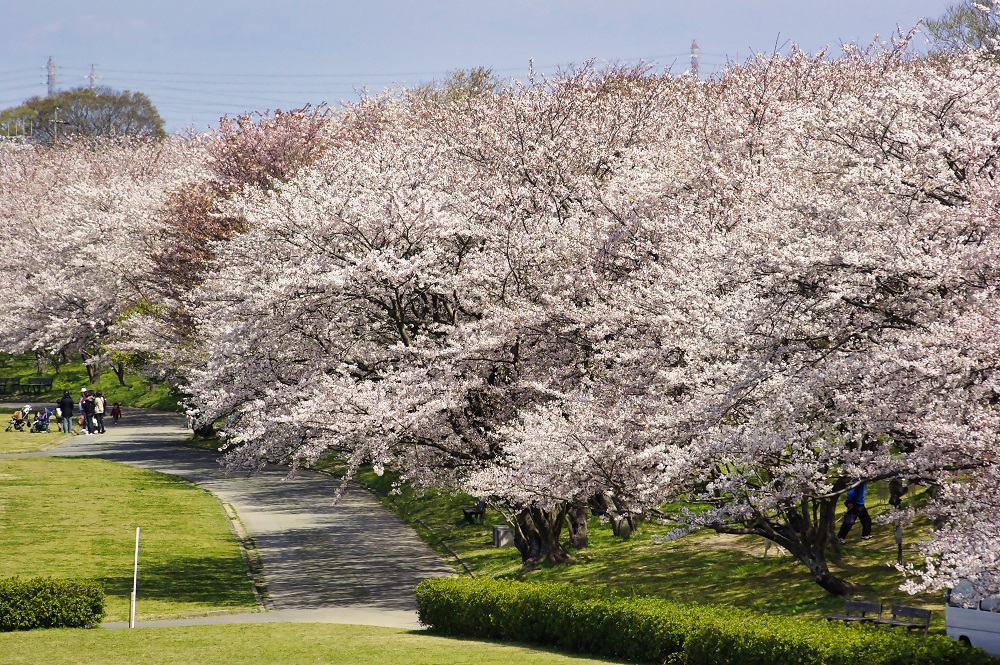
Shiga
Lake Biwa Canal (Otsu City)
Lake Biwa Canal is a historic canal built in 1890 to carry water from Lake Biwa to Kyoto, and was the first large-scale civil engineering project designed and built by the Japanese. The canal was completed through demanding work that relied heavily on human labor in an era when heavy machinery was not yet available. Today both banks of the canal are adorned with countless cherry trees. You can enjoy the view while strolling along the promenade, or take a ride on the Biwako Canal Boat and appreciate the cherry blossoms from a different angle.
Click here for more on Otsu City
Hikone Castle (Hikone City)
Hikone Castle was the residence of the Ii family, feudal lords who served in important positions in the Edo Shogunate and supported the reign of the Tokugawa family. Many cherry trees are planted around the double moat that remains to this day, and the reflection of the castle and cherry blossoms in full bloom on the surface of the moat is nothing less than stunning.
Click here for more on Hikone Castle
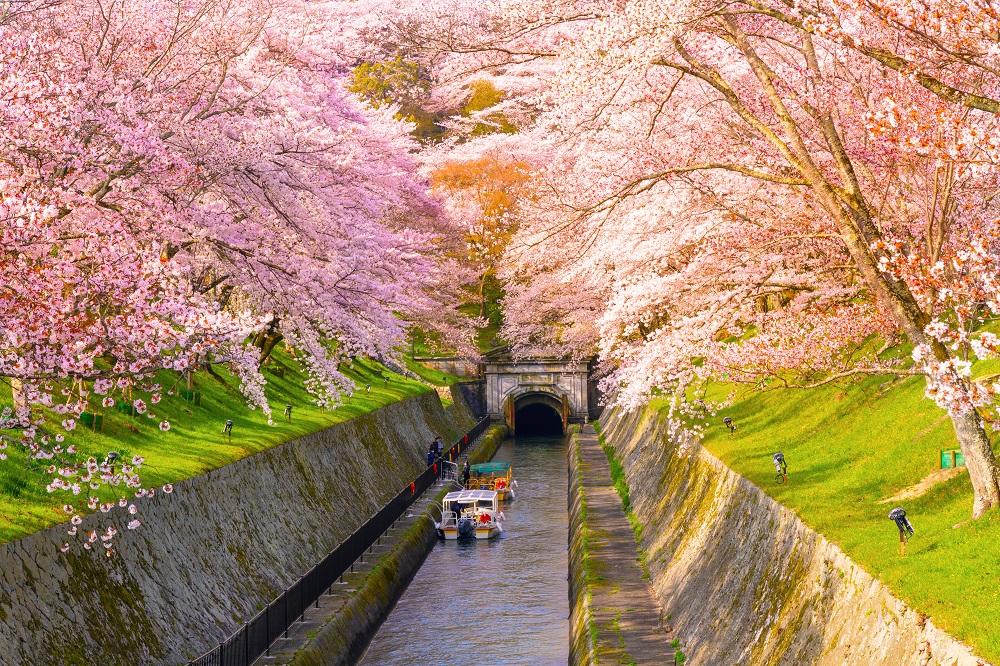
Fukui
Maruoka Castle (Sakai City)
Maruoka Castle is the only castle in the Hokuriku region with an existing castle tower built before the Edo Period. The castle tower is encircled by 400 cherry trees, and when the cherry blossoms are in full bloom, the castle tower appears to float on a cloud of pink blossoms, creating a magical sight. When the castle is lit up at night, you can enjoy a different view of Maruoka Castle and the cherry blossoms than that of the daytime.
Click here for more on Sakai City
Asuwa River (Fukui City)
Running through the heart of Fukui Prefecture, Asuwa River boasts a 2.2 km corridor of cherry blossom trees along its northern bank. 600 cherry trees form one of the largest arches in Japan, making it one of the country's most impressive hanami spots. During the blooming season, the Fukui Spring Festival is held and the trees are illuminated at night.

Ishikawa
Kenrokuen (Kanazawa City)
Kenrokuen is one of Japan's three most famous traditional gardens, and was created over a long period of time by successive lords of the Kaga domain. There are more than 400 cherry trees of over 40 varieties in the garden, including a rare species called "chrysanthemum cherry," which looks like a chrysanthemum flower with 300 petals on each flower. Kenrokuen is also lit up gorgeously during the cherry blossom season.
Click here for more on Kenrokuen.
Ipponmatsu Park (Wajima City)
Ipponmatsu Park is located on a small hill in Wajima City and is one of the most famous cherry blossom viewing spots in Okunoto, with approximately 1,000 cherry trees. There are cherry trees planted on either side of the promenade, where visitors can enjoy passing under a pink tunnel of cherry blossoms topped off with an unforgettable panoramic view of the Sea of Japan.
Click here for more on Wajima City
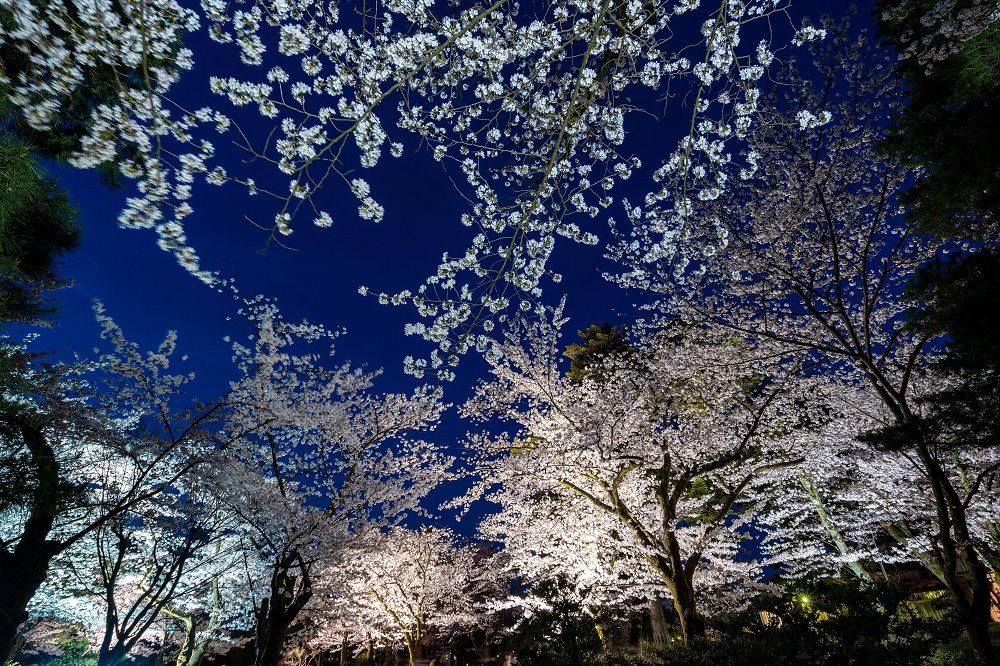
Toyama
Oyabe River Park (Nanto City)
Oyabe River runs through the center of Fukumitsu Town, Nanto City, and is lined with cherry trees for about 2 km along its banks — an area commonly known as "Senbonzakura" (one thousand cherry trees). There is also an open grass area alongside the riverbed where many people enjoy picnics while appreciating the flowers that surround them. At night, the area is lit up with lanterns, creating a fantastic sight.
Click here for more on Nanto City
Matsukawa Park (Toyama City)
Matsukawa River runs through the heart of Toyama and is one of the region's best cherry blossom viewing locations, boasting around 500 cherry trees which line both banks. The river used to serve as the outer moat of Toyama Castle, and even today, Toyama Castle can be seen from the riverside. While strolling along the riverside promenade is a good way to view the flowery scene, taking a sightseeing boat through the tunnel of cherry blossoms is also a very special and unique experience.
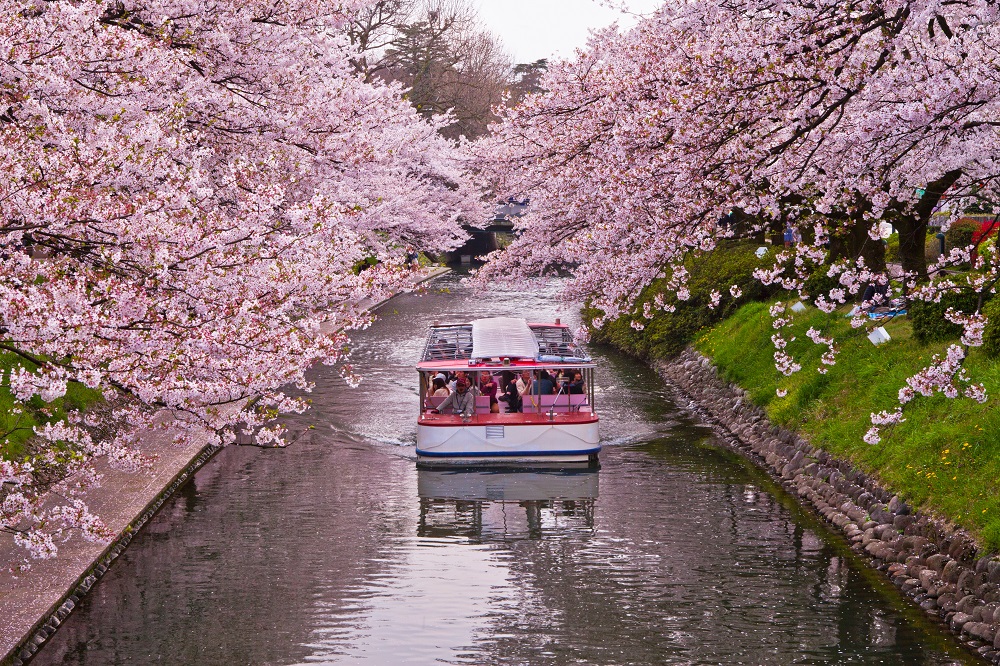
Destinations
Nagoya Castle/名古屋城(Aichi)
The icon of Nagoya is without a doubt Nagoya Castle (Nagoya-jo), which was built by Tokugawa Ieyasu after the Battle of Sekigahara in the year 1600. This castle, intended as the residence of the Owari....
Inuyama Castle/犬山城(Aichi)
Built in 1537 by Oda Nobuyasu, the uncle of the famous warlord Oda Nobunaga, Inuyama Castle is the symbol of Inuyama City. The castle's keep is the oldest still standing in Japan, and the castle as a ....
Meiji Mura/明治村(Aichi)
Open-air museum Meiji Mura opened in 1965 to preserve and exhibit Meiji architecture. Buildings of artistic and historical value, mainly from the Meiji Era (1868-1912), have been relocated and restore....
Lake Hamana/浜名湖(Shizuoka)
Lake Hamana is a brackish-water lake that spans the boundaries of Hamamatsu and Kosai cities. With a circumference of 114 km, it is the largest brackish-water lake in Japan. Eels, seaweed, oysters, an....
Matsumoto Castle/松本城(Nagano)
Matsumoto Castle is Japan's oldest five-tiered castle with a six-story keep, and one of only 12 castles in the country with a keep that dates back pre-Edo Period (1600/1603-1868). Currently, only two ....
Gifu Castle/岐阜城(Gifu)
Gifu Castle, formerly known as Inabayama Castle, was Saito Dosan during the Warring States Period. Perched atop a rocky hill, this castle was reputed as being impregnable, and it was said that "whoeve....
Kenrokuen/兼六園(Ishikawa)
Kenrokuen is one of the three most famous gardens in Japan, alongside Okayama Korakuen in Okayama City, Okayama Prefecture, and Mito Kairakuen in Mito City, Ibaraki Prefecture. As one of the most famo....

